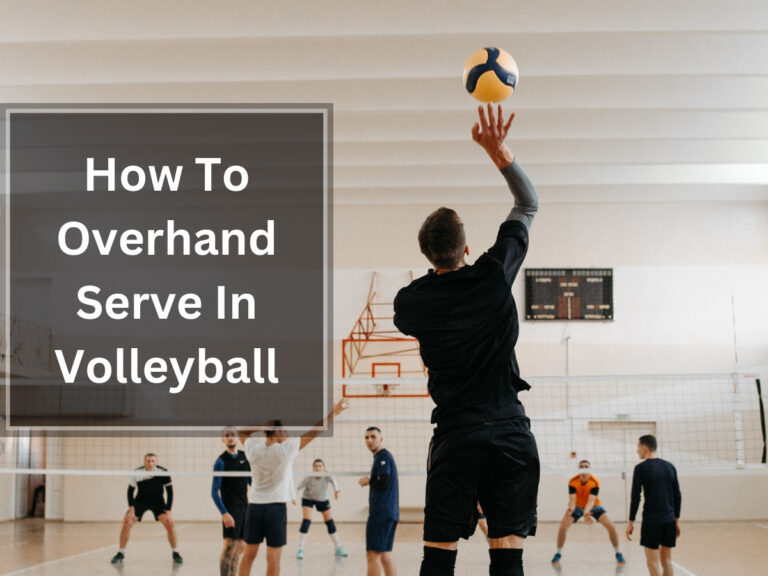Mastering the 6-2 Volleyball Rotation: Tips and Strategies for Success

Are you looking to enhance your volleyball team’s offensive strategies and tactics? The 6-2 volleyball rotation might be just what you need.
Imagine this scenario: You have a skilled setter who can seamlessly transition from setting to attacking, providing your team with multiple offensive options. With the 6-2 rotation, you’ll have not one, but two versatile setters on the court, allowing for three front row attackers at all times.
This formation not only increases your team’s flexibility in setting choices but also maximizes the skills of multiple players. However, mastering the 6-2 rotation requires effective communication and coordination among teammates.
In this article, we will dive into the basics of the 6-2 rotation, explore the roles and responsibilities of each player, discuss setting strategies, attacking options, blocking and defensive tactics, as well as analyze its overall effectiveness.
So get ready to revolutionize your team’s offense with the dynamic and balanced 6-2 volleyball rotation!
Table of Contents
Understanding the Basics of the 6 2 Volleyball Rotation
The understanding of the basics of the 6-2 volleyball rotation is essential for coaches and players to effectively utilize the advantages and overcome the limitations associated with this offensive strategy.
In the 6-2 rotation, there are six attackers and two setters on the court at any given time. This allows for three front row attackers, providing more offensive options for the team.
The setters play opposite each other, with one setter always on the front row and one on the back row. The key to successfully running a 6-2 rotation lies in the setting techniques and defensive formations.
Coaches must train their setters to be effective attackers as well, while also ensuring that all players understand their roles in transitioning between setter and attacker positions.
Defensive formations need to be coordinated to cover all areas of the court effectively while keeping up with opponent attacks.
Understanding these fundamental aspects is crucial for implementing a successful 6-2 volleyball rotation strategy.
Roles and Responsibilities of Players in the 6 2 Rotation
In the 6-2 rotation, each player has specific roles and responsibilities. Here is a breakdown of the key tasks for each position:
Setters: The setters are responsible for running the offense and making accurate sets to the hitters. They need to have excellent setting techniques and decision-making skills to effectively distribute the ball to their teammates.
Hitters: The hitters, also known as attackers, have the primary responsibility of scoring points by hitting or spiking the ball over the net. They need to be skilled in attacking techniques such as timing their approach, jumping high, and hitting with power and accuracy.
Libero: The libero specializes in defensive positioning and passing. Their main role is to receive serves, dig hard-driven attacks, and provide consistent passes to set up offensive plays.
Blockers: The blockers play a crucial role in defense by attempting to block or deflect opponents’ attacks at the net. They need good anticipation skills, quick reactions, and solid blocking techniques.
By understanding these roles and responsibilities, players can work together cohesively in executing effective plays and strategies within the 6-2 rotation system.
Transitioning Between Front and Back Rows in the 6 2 Rotation
Transitioning seamlessly between the front and back rows in the 6-2 rotation requires mastering various techniques. One technique is clear communication between the setters and attackers, signaling when to switch positions.
Timing is also crucial, as players must coordinate their movements to avoid collisions or confusion. Practicing different rotation variations can help players become more comfortable with transitioning between rows. Coaches can incorporate drills that simulate game-like scenarios, allowing players to practice moving from serve receive to defensive positions and vice versa.
By honing these skills and exploring different rotation variations, players can enhance their performance in the 6-2 rotation and contribute effectively to their team’s success on the volleyball court.
Setting Strategies in the 6 2 Rotation
Mastering setting strategies is crucial for success in the 6-2 rotation. It allows you to effectively utilize your team’s offensive options and keep the defense guessing. Here are three key setting strategies to consider:
Utilize quick sets: Quick sets can catch the defense off guard and create scoring opportunities. By setting the ball close to the net for a fast attack, you can exploit gaps in the opponent’s block and put pressure on their defense.
Mix up your sets: Varying your sets between different attackers keeps the defense guessing and makes it harder for them to anticipate where the ball will go next. By mixing up your sets, you can create confusion and open up more attacking options for your team.
Set back row attacks: In the 6-2 rotation, you have two setters on the court at all times, allowing you to set from both front and back rows. Setting back row attacks can be an effective strategy to involve all three front row attackers and create a balanced offense.
By implementing these setting strategies, you can maximize your team’s offensive capabilities in the 6-2 rotation and increase your chances of scoring points against tough opponents.
Attacking Options in the 6 2 Rotation
The 6-2 rotation offers a variety of attacking options for the team. Three front row attackers are always available, putting pressure on the opponent’s defense. The two setters can also contribute to the attack, adding unpredictability. With multiple attackers and setters, teams can employ different attacking strategies. This rotation allows for more flexibility in setting choices, as both setters can take turns running the offense. Defensive positioning is crucial in the 6-2 rotation to ensure smooth transitions from receiving a serve to getting into position for defense. By utilizing effective attacking strategies and maintaining strong defensive positioning, teams can maximize their offensive capabilities in the 6-2 rotation.
Blocking and Defensive Tactics in the 6 2 Rotation
When it comes to blocking and defending in the 6-2 rotation, you’ll need to work together as a team to create a solid wall at the net and be quick on your feet to cover any potential gaps in the defense. Here are some key techniques and strategies to consider:
Blocking Techniques:
- Focus on proper footwork and timing for effective blocks.
- Communicate with your teammates to ensure coordinated blocking.
- Aim to block towards the opponent’s hitting zones.
- Utilize different blocking formations based on the opponent’s tendencies.
Defensive Positioning:
- Maintain a balanced defensive stance with knees bent and weight forward.
- Anticipate the opponent’s attacks by reading their body language.
- Adjust positioning based on where the setter is likely to set.
- Be ready to quickly transition from defense to offense after making a dig.
Remember, effective blocking and defensive tactics require practice, communication, and teamwork. By mastering these skills in the 6-2 rotation, you can strengthen your defense and increase your chances of success on the court.
Communication and Coordination in the 6 2 Rotation
Communication and coordination are essential in the 6-2 rotation. Teammates must work together seamlessly to execute plays and ensure a smooth transition between positions. In this rotation, players face specific communication challenges.
For example, when transitioning from serve receive to defensive positioning, players must communicate effectively to determine responsibilities. This includes covering tips or roll shots and assigning blocking duties. Defensive positioning requires coordination to ensure proper spacing and coverage.
Players need to communicate their movements and intentions to avoid overlapping or leaving gaps in the defense. Effective communication and coordination are crucial for success in the 6-2 rotation. They allow teammates to anticipate each other’s actions and work as a cohesive unit on the court.
Analyzing the Effectiveness of the 6 2 Rotation
In the previous section, we discussed the importance of communication and coordination in the 6-2 rotation. Now, let’s analyze the effectiveness of this offensive system and compare it to other strategies.
The 6-2 rotation offers several benefits that make it a popular choice for many teams. One major advantage is having three front row attackers at all times, providing more offensive options and putting pressure on the opponent’s defense. Additionally, the flexibility in setting choices keeps the defense guessing and allows for strategic plays.
When comparing the 6-2 rotation to other offensive systems like the 5-1 or 4-2, each has its own strengths and weaknesses. The 5-1 gives one setter full control of setting while always having three attackers in every rotation. On the other hand, the 4-2 provides more consistent setting but limits back row attack options.
Analyzing these different systems can help coaches determine which strategy best suits their team’s strengths and goals. It is important to consider factors such as player skills, versatility, and style of play when deciding on an offensive system. Ultimately, finding a balance between offense and defense is key to achieving success on the court.
Frequently Asked Questions
What are the differences between the 6-2 and 4-2 rotations in volleyball?
The 6-2 rotation in volleyball has the advantage of having 6 available attackers, providing more offensive options. On the other hand, the 4-2 rotation only has 4 attackers, limiting the offensive possibilities.
How does the 6-2 rotation utilize the skills and strengths of multiple players?
The 6-2 rotation maximizes team strengths by utilizing the skills of multiple players. It allows for three front row attackers, providing more offensive options and creating a balanced and dynamic offense.
Is the 6-2 rotation commonly used in college volleyball teams?
The 6-2 rotation is less common in college volleyball teams compared to high school and junior volleyball. However, it still has advantages such as providing more offensive options and utilizing the skills of multiple players. It can also impact player development and playing time.
What are some common mistakes that teams make in the 6-2 rotation?
Common mistakes in the 6-2 rotation include miscommunication between setters and attackers, lack of synchronization in timing and positioning, over-reliance on specific setter-attacker combinations, inconsistent execution of plays and strategies, and failure to adapt to changing game situations. Strategies for success include effective communication, coordination, and practice in order to improve these areas and enhance overall performance.
How can a team adjust and modify the 6-2 rotation based on their strengths and weaknesses?
To adjust and modify the 6-2 rotation based on your team’s strengths and weaknesses, focus on adjusting offensive strategies to maximize scoring opportunities. Additionally, evaluate defensive capabilities to ensure the team can effectively defend against opponents’ attacks.










